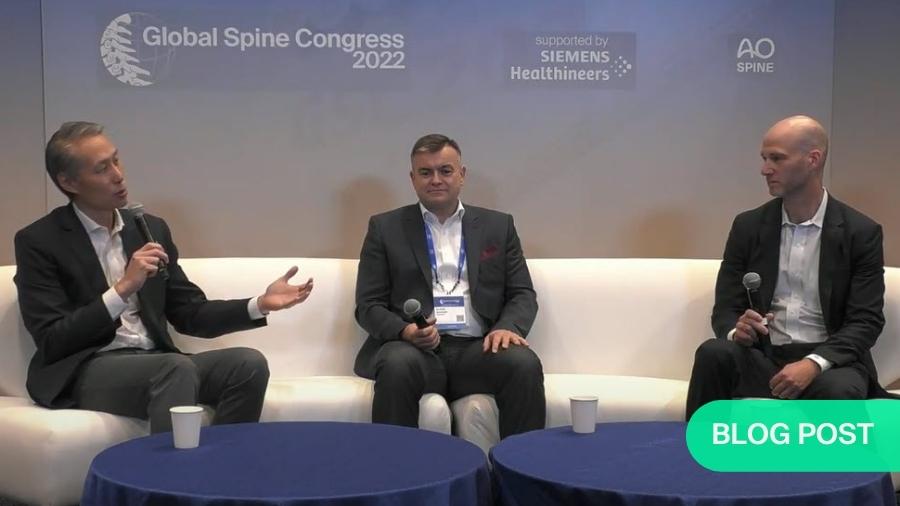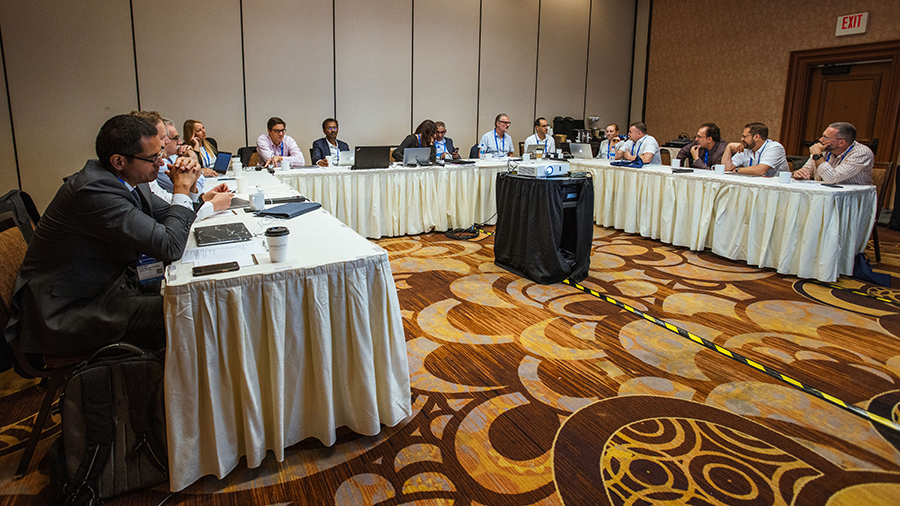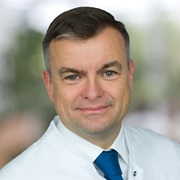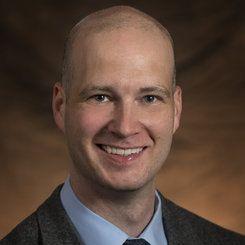Unpacking the differing approaches to thoracolumbar burst fractures treatment on the two sides of the Atlantic—from controversy to consensus?

AO Spine Knowledge Forum Trauma will soon publish results from an international study examining clinical outcomes in patients with thoracolumbar A3/A4 burst fractures, who received non-operative treatment compared to those who had surgery. The landmark study may settle a controversy that has divided spine surgeons across the world.
Or, then again, it may not.
We explored the difference in approaches in a debate moderated by Dr Jeff Wang at the Global Spine Congress 2022 in Vegas. Klaus Schnake is an advocate for surgery, Gregory Schroeder for conservative treatment.
While burst fractures account for almost half of all thoracolumbar spine injuries, treatment plans vary considerably between countries, centers, and even individual surgeons. In general, European surgeons tend to lean towards surgical treatment whilst American surgeons favor a more conservative approach. Surgery can get patients back on their feet quicker, but back brace is often preferred because of lower associated risk.
Surgeons arguing for surgical treatment stress that at least complete burst fractures must be operated on. Idea is to get patients out of the bed as fast as possible, make them mobile without orthosis, and get them back to work and other activities they were doing before.
Operating is invasive, but supporters think this achieves best sustainable results in the end.
MISS techniques reduce morbidity
Most opposition to surgery comes from high risks associated with it. With every surgery, morbidity comes into the picture. Each incision on the skin can cause bleeding, infection, complications. The Kirkham Wood study from the 1980s already found that the complication rate of operating on thoracolumbar burst fracture patients is significantly high.
ublished in 2014, the Kirkham Wood’s research paper "Management of Thoracolumbar Spine Fractures"(*) examined five decades of literature, articles and abstracts covering thoracolumbar spine fractures with and without neurological deficit.
The study observed that most thoracolumbar spine fractures are stable and do not require surgery, and nonoperative treatment with brace or cast was effective.
Advances in nonoperative treatment have almost eliminated the need for surgery altogether.
But then again, also surgical techniques have advanced by leaps since then, particularly the minimally invasive approaches. We do not operate any longer like in the 1980's, treatment has completely changed. The spinal treatment we are talking about here, is today almost exclusively minimally invasive, with very few indications where open surgery would be necessary. Such cases you are typically the ones you operate on anyway, like the C-type translational fracture injuries.
In Germany, burst fractures are examined with a CT scan and patients go quickly to the OR for a posterior percutaneous fixation. In some cases, there is additional anterior stabilization needed, but also this procedure is typically done through a minimal-invasive approach.
Open surgery carries a higher of risk for complications and patients take longer to recover, but the argument supporting surgery is that with minimally invasive approached patients can get up the next day.
Non-union could set back recovery due to second surgery
Another important factor to consider when debating surgical and non-surgical approaches is the risk of unsuccessful fusion. This is a concern also with minimally invasive percutaneous fixation, where you may end up with non-fusion and loose screws. In such cases, you're looking at another surgery in six months to a year from now.
When the argument for surgery is getting people up and moving faster, another surgery will set that back. Whilst there is a possibility of making a fusion anteriorly through a MIS procedure a few days after the initial surgery, in some cases the patient will indeed have to undergo another surgery, and this might not help people get back to work faster than with a brace.
Conservatively treated patients could come back in a month's time living their full normal lives. However, the fractures may not heal or patients can develop a kyphotic posture requiring surgery later on.
Osteoporotic burst fractures pose treatment challenges
The challenges of treating burst fractures are particularly acute in elderly patients. While it’s even more important to get these patients mobile as quickly as possible, there is a much higher chance of hardware failure in surgery. Thus, treatment approaches to osteoporotic burst fractures are different to that of non-osteoporotic fractures.
These are the patients that really make surgeons rack their head around: an osteoporotic burst fracture is not the same as a burst fracture with healthy bone. Treating elderly patients, maybe not even with a brace, in six months they may be collapsing into kyphosis. Yet, putting in screws may not help either—the screws would just come loose and pull out.
Time is the critical factor in treating such patients. When elderly patients are bedridden and in severe pain—if the fracture is several unstable, they will have mechanical pain getting up—it could be worth considering surgery just to get them out of bed.
Traditionally you would take a percutaneous approach, favoring an MIS procedure suitable for elderly patients. However, the challenge with the screws remains. These can be augmented with bone cement (PMMA), but it still remains a high-risk approach.
In recent years, many surgeons have adopted a hybrid stabilization technique, typically a bi-segmental, cement augmented, percutaneous stabilization, either with index screws in the fractured vertebral body or with a kyphoplasty or vertebroplasty at the index level. Vertebroplasty, or kyphoplasty and a short percutaneous stabilization are in the toolbox.
But many might still opt for putting these patients in a brace and expect them to be fine.
Shorter term clinical outcomes will bring more clarity
It’s this divergence of approach that underlines the importance of the AO Spine Knowledge Forum Trauma study on burst fractures. Previous research has come up with contradictory results. Some studies show increased patient satisfaction and positive socio-economic results with surgery, while others show improved outcomes and lower morbidity in non-surgical treatment options.
The AO Spine study aimed to address these variations by investigating the clinical outcomes of treatment alternatives in neurologically intact patients.
The observational, international multicenter study sought to compare the clinical outcomes during the first year of surgical versus non-surgical treatment. An additional analysis looked specifically at a sub-group of patients who—according to a blinded expert panel—qualified for both surgical and non-surgical treatment due to clinical equipoise.
The study also included a cost-effectiveness analysis to define the social impact and health economic aspects of both treatment options. A patient diary with the Oswestry Disability Index, employment information, and indirect costs questionnaire continued two years after treatment with all interventions and examinations considered as standard of care.
The spine surgery community believe the outcome could shed light on this controversial topic. We know that in the long term, the results are the same. There is no 100% need for surgery if the patient has time. If you treat them conservatively and wait, that will work.
What we don’t yet have the data on, is what happens three months after surgery? Are they all still fine? Do they go back to work? What we decided we needed to find out are the short-term outcomes. That is why we performed the study.
We will have answers soon—and hopefully, a consensus.
About the authors
Further reading and resources:
Read more and download the AO Spine Injury Classification Systems toolkits.
Find out more about the AO Spine Knowledge Forum Trauma and their ongoing studies.
Previous milestones of the global Thoracolumbar Burst Fractures (AOSpine TLA3-A4) in Neurologically Intact Patients study and its participating centers in the AO Spine Newsletter (2018). ClinicalTrials.gov Identifier: NCT02827214.
(*) Wood KB, Li W, Lebl DR, Ploumis A. Management of thoracolumbar spine fractures. Spine J. 2014 Jan;14(1):145-64. doi: 10.1016/j.spinee.2012.10.041. Erratum in: Spine J. 2014 Aug 1;14(8):A18. Lebl, Darren S [corrected to Lebl, Darren R]. PMID: 24332321.
Disclaimer
The articles included in the AO Spine Blog represent the opinion of individual authors exclusively and not necessarily the opinion of AO Spine or AO Foundation.




